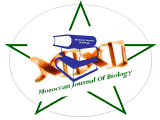Keltoum Anflous
Baylor College of Medicine, Department Molecular and Human Genetics, Houston, Texas, USA. Tel: +1 (713) 798-8306, Fax: +1 (713) 798-7773.E-mail: kanflous@bcm.tmc.edu
Abstract
Voltage-dependent anion channels (VDACs) in the mitochondrial outer membrane constitute the main permeability pathway across the outer membrane. VDACs may not only facilitate but potentially regulate the movement of ATP between the cytosol and the mitochondrial spaces.
Therefore, VDACs are ideally suited to controlling ATP flux through the mitochondrial outer membrane, and consequently other mitochondrial functions such as apoptosis. Because VDACs interact with kinases and the adenine nucleotide translocase in important mitochondrial structures such as special contact sites and megachannels, a regulatory role in mitochondrial energy metabolism has been suggested. In the past, a number of in vitro studies have led to the hypothesis that VDACs may be involved in the regulation of a number of mitochondrial function. However, extrapolation from the in vitro data to the role that VDACs may play in cell function remained without convincing answer. The generation of VDACs deficient mice filled some of the gap that exist between the data obtained from reconstituted system and the in vivo VDACs function(s). The present review summarizes recent reports with VDACs deficient mice that shed light on the physiological function of mouse VDAC1 and VDAC3 in a cellular and organismal context.
Key words : Mitochondrial outer membrane, porin, VDAC, mice, ADP, hexokinase, glucose tolerance, exercise.
 Moroccan Journal Of Biology. ISSN : 1114-8756
Moroccan Journal Of Biology. ISSN : 1114-8756